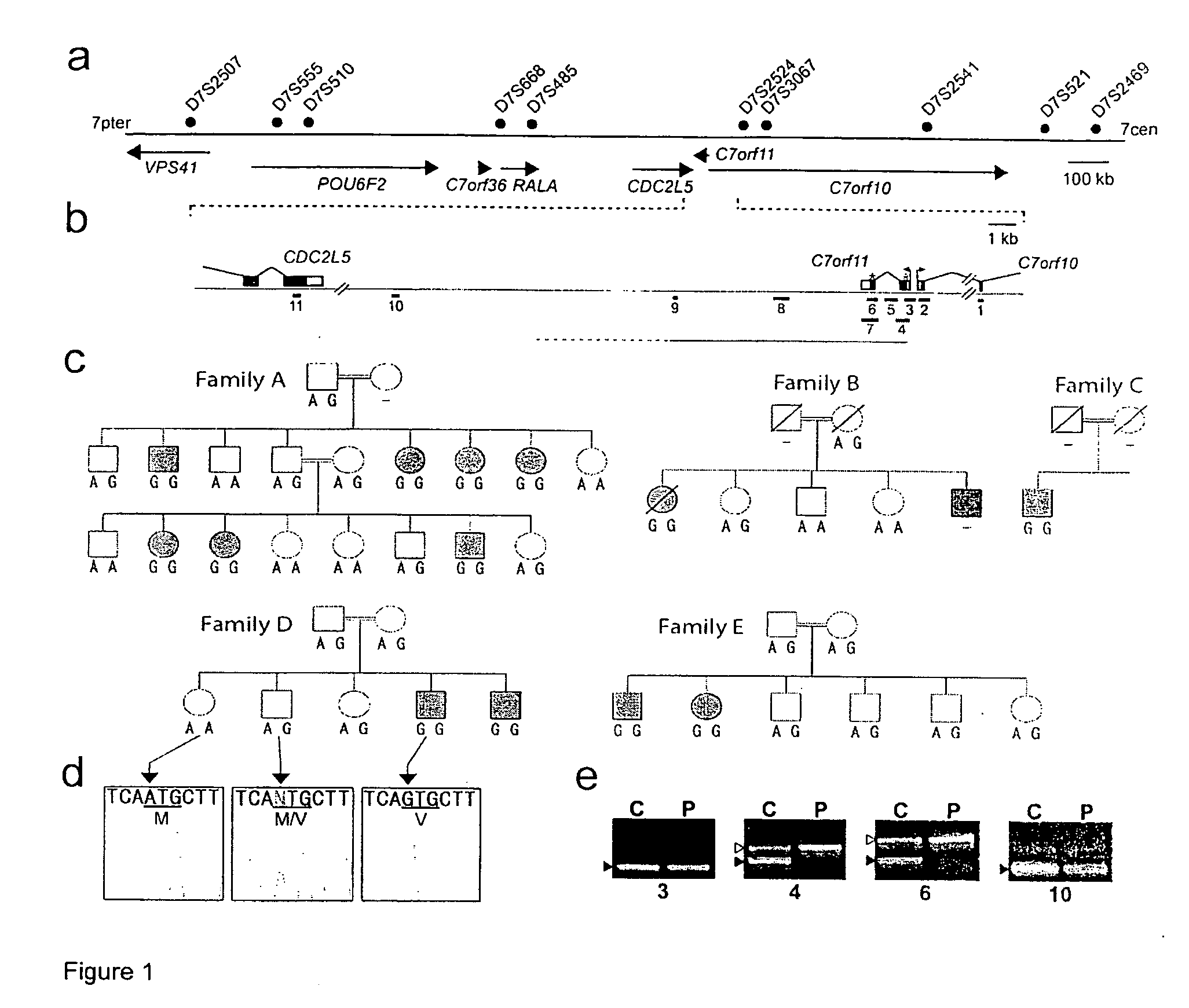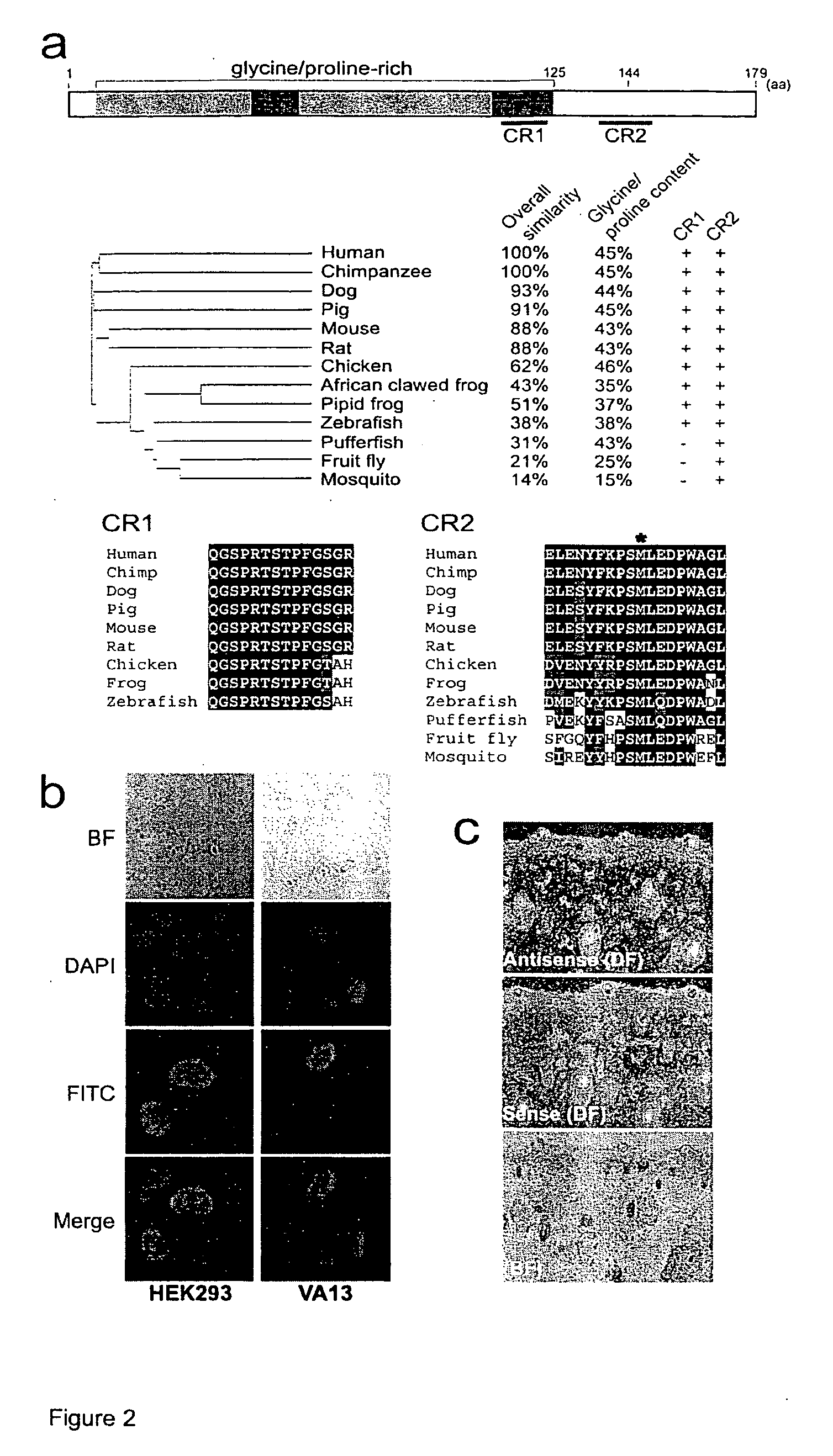Mutations in the C7orf11 (TTDN1) gene causative of non-photosensitive trichothiodystrophy
a non-photosensitive trichothiodystrophy and c7orf11 technology, applied in the field of c7orf11 gene as causative of non-photosensitive trichothiodystrophy, can solve the problems of dry, sparse, easily broken, abnormal sulfur-deficient brittle hair, etc., to prevent disease, treat and/or prevent disease
- Summary
- Abstract
- Description
- Claims
- Application Information
AI Technical Summary
Benefits of technology
Problems solved by technology
Method used
Image
Examples
examples
Mutation Screening and Genotyping by SNaPshot Assay
[0167] To screen the two exons and 5′ upstream region of the C7orf11 gene, three sets of primer pairs were used (sequences and product size are listed):
C7orf11-5upF / ex1R1(5′-GTCTCAGATGGCATCGGTC-3′,(SEQ ID No. 4)5′-GTTCTCCCACCGGAACTGTA-3′,(SEQ ID No. 5)and 413 bp),C7orf11ex1-F2 / R3(5′-GAACTGATGTGCCGTAGGGT-3′,(SEQ ID No. 6)5′-AAGTAAGAGCTCGGCAAACG-3′,(SEQ ID No. 7)and 510 bp),andC7orf11ex2-F / R2(5′-CAATGTGATTCCCGCTAACC-3′,(SEQ ID No. 8)5′-TCATACCACAAAACCACAATAGC-3′,(SEQ ID No. 9)and 627 bp).
PCR was performed on 50 ng of genomic DNA in 25 μl scale reaction [20 mM Tris-HCl (pH 8.4), 50 mM KCl, 1.5 mM MgCl2, 0.2 mM dNTP, 100 ng each primer, and 1 Unit Taq polymerase (Invitrogen)]. The cycling conditions were: initial denaturation at 94° C. for 3 min, followed by 35 cycles of denaturation at 94° C. for 30 seconds, annealing at 58° C. for 30 seconds, and extension at 72° C. for 60 seconds. PCR products were purified using microCLEAN (Mic...
PUM
| Property | Measurement | Unit |
|---|---|---|
| pH | aaaaa | aaaaa |
| volume | aaaaa | aaaaa |
| volume | aaaaa | aaaaa |
Abstract
Description
Claims
Application Information
 Login to View More
Login to View More - R&D
- Intellectual Property
- Life Sciences
- Materials
- Tech Scout
- Unparalleled Data Quality
- Higher Quality Content
- 60% Fewer Hallucinations
Browse by: Latest US Patents, China's latest patents, Technical Efficacy Thesaurus, Application Domain, Technology Topic, Popular Technical Reports.
© 2025 PatSnap. All rights reserved.Legal|Privacy policy|Modern Slavery Act Transparency Statement|Sitemap|About US| Contact US: help@patsnap.com



